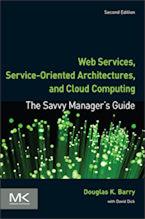Object-Relational Mapping
If you want to take advantage of using an ODBMS in the middle tier and have one or more existing relational databases, you will need to map data from a relational format to an object format.

So, if you need to map, consider using an object-relational mapping product. They will save you time and reduce the number of defects in your mapping. For more information on object-relational mapping products, click here.
An object-relational mapping product is shown at the left of this figure. It handles the mapping and has a cache much like an ODBMS. Data is mapped to the ODBMS and from the ODBMS based on the application needs. The ODBMS provides high-speed performance for the Internet.
For more information on mapping details, see mapping.
For how to use object-relational mapping with Java application servers, see enterprise architectures using Java application servers.
Context for Object-Relational Mapping
Related Articles for Object-Relational Mapping
Author
Douglas K Barry
Principal
You may use this material for your work or classes. Reprint Policy. Be sure to check the menu at the left for other articles available on this site.
The Savvy Manager's Guide
Douglas K Barry is also the author of a book that explains Web Services, service-oriented architecture, and Cloud Computing in an easy-to-understand, non-technical manner.
Web Services, Service-Oriented Architectures, and Cloud Computing: The Savvy Manager's Guide (Second Edition)
by Douglas K Barry with David Dick
This is a guide for the savvy manager who wants to capitalize on the wave of change that is occurring with Web Services, service-oriented architecture, and—more recently—Cloud Computing. The changes wrought by these technologies will require both a basic grasp of the technologies and an effective way to deal with how these changes will affect the people who build and use the systems in our organizations. This book covers both issues. Managers at all levels of all organizations must be aware of both the changes that we are now seeing and ways to deal with issues created by those changes.

